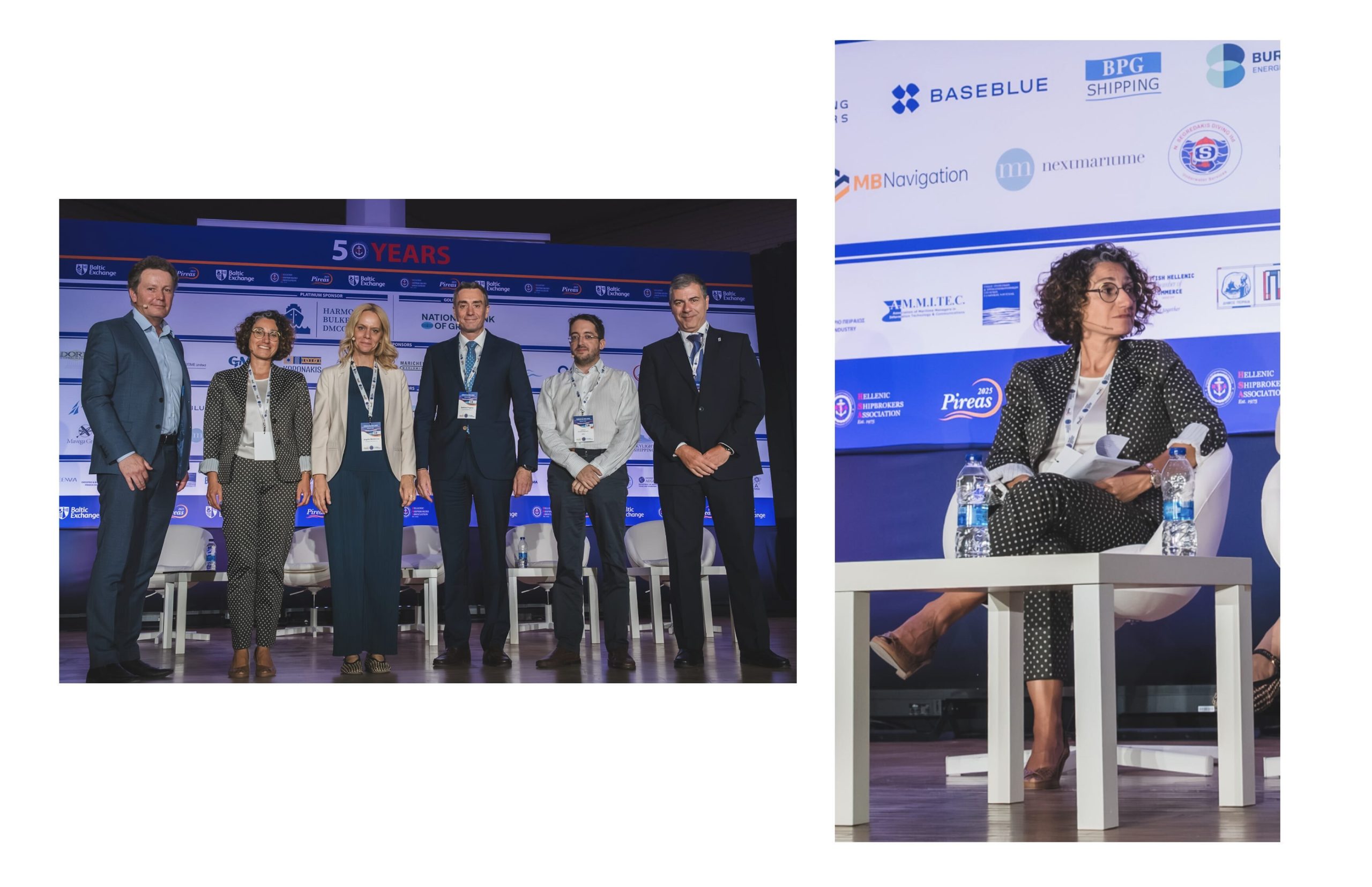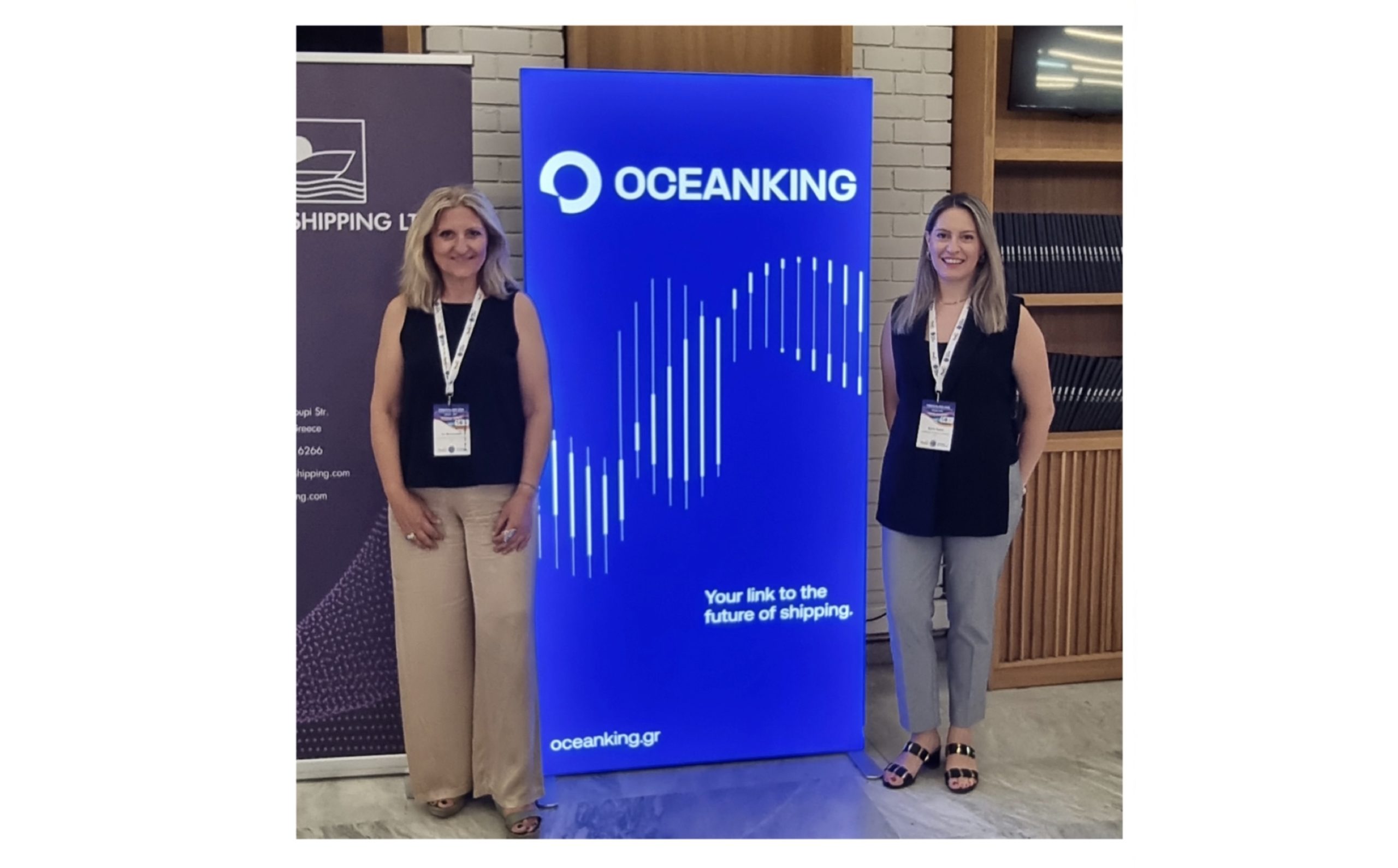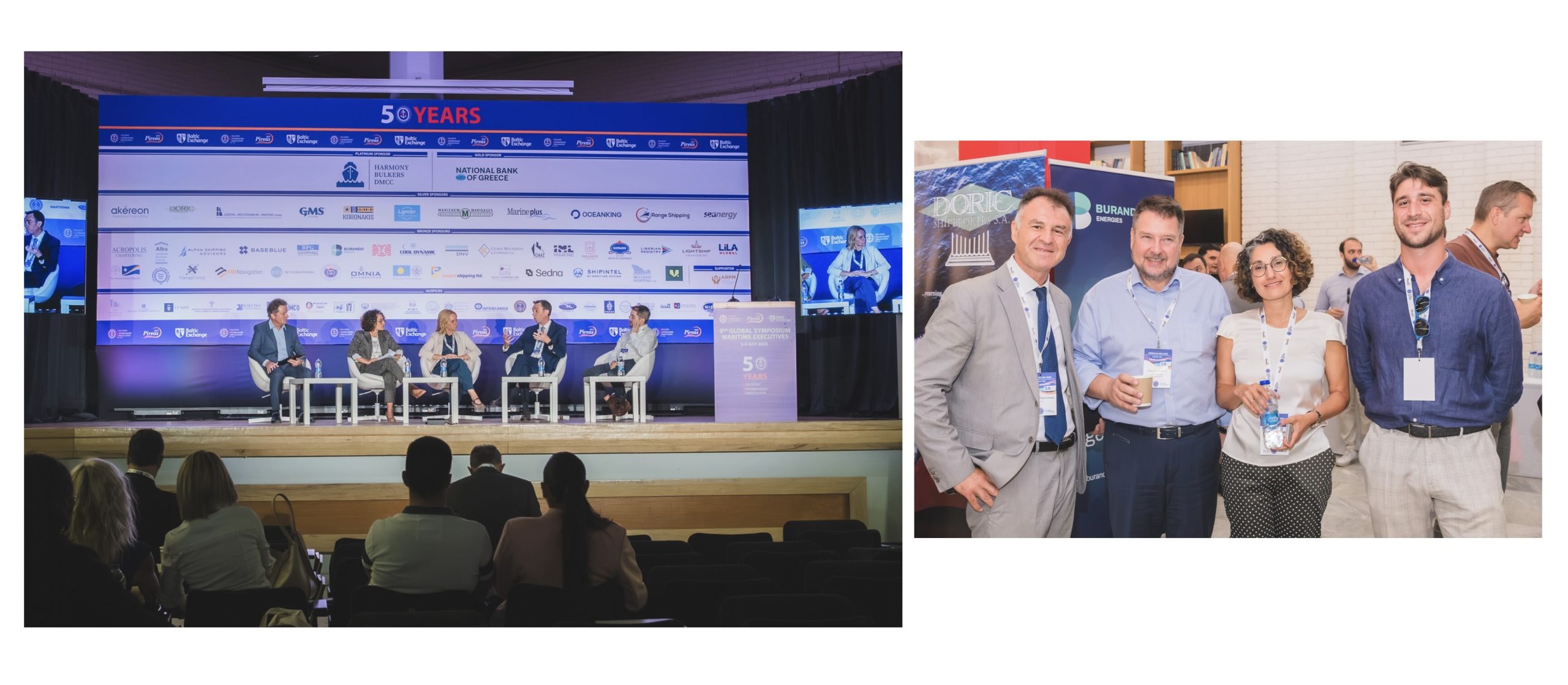From Regulation to Results: Key Data from Carola Yannouli’s Baltic Exchange Panel discussion at the Piraeus HSA conference
#propeller #decarbonization #WAPS #esail
At the recent Hellenic Shipbrokers Association conference, industry experts gathered to discuss the growing impact of environmental regulations on shipping markets, focusing on balancing compliance, competitiveness, and cost. The panel, moderated by Martin Crawford–Brunt, Baltic Exchange Carbon Lead, featured key voices including Angeliki Malathrona (Redshaw Advisors), Lefteris Koukoulopoulos (DNV), Stefanos Fragkos (Allied Shipbroking), and Carola Yannouli, General Manager of OCEANKING.

Technology Provider Perspective on Decarbonization
Carola Yannouli brought the perspective of a technology provider to the discussion, emphasizing that technologies aimed at reducing fuel consumption are essential, not only to meet decarbonization targets but also to help shipowners maintain profitability.
One major challenge in the past has been the lack of transparent, verified performance data, which created uncertainty in building a strong business case for decarbonization technologies. This is now changing, as leading technology providers and pioneering shipowners are openly sharing validated operational data, encouraging wider adoption. Additionally, a growing suite of tools is becoming available to help shipowners evaluate various options and develop commercially viable decarbonization strategies.
While transitioning to cleaner technologies involves costs, the potential for increased vessel value through fuel savings, regulatory compliance, and growing market demand is significant.
Proven Technologies Delivering Results
Several decarbonization technologies are already proving their effectiveness through third-party validation of performance results.
Examples of validated technology performance:
Efficiency Propeller (Stone Marine NPT and Cap Fin) and a Preswirl ESD
- Neptune Hellas (PCTC)
Owned by Neptune Shipping, Neptune Hellas, operating between UK and Germany, is fitted with a Stone Marine New Profile Technology (NPT) propeller, a Stone Marine Cap Fin, and a pre-swirl ESD. During sea trials, she demonstrated a notable 6% reduction in power demand at 16 knots service speed, increasing to 7% at higher speeds. These results support a favorable payback period of approximately 1.5 years.
WASP Technology
- Ville de Bordeaux (Ro-Ro)
Operated by Louis Dreyfus Armateurs and chartered by Airbus, this vessel runs between Northern Europe and the US and is equipped with three 22-meter eSAIL® systems by bound4blue. A third-party assessment by Bureau Veritas confirmed annual fuel savings of 568 metric tons, with peak daily savings reaching 5.4 metric tons. Assuming a fuel price of $600 per ton, the payback time is estimated at 5 years without Fuel EU regulations.
WASP Technology when operating within EU
Under FuelEU Maritime, WASP directly reduces both CO₂ emissions and GHG intensity, supporting compliance under FuelEU Maritime and making compliance easier and more cost-effective.
- Bow Olympus (MR Tanker)
Owned by Odfjell, operating between Antwerp and Houston, she is fitted with four 22-meter eSAIL® units by bound4blue. Moreover, the vessel is also using weather routing software to maximize the effect of the WASP. Across varying wind conditions, average daily fuel savings of 5 metric tons within one year of operation were measured by three different parties (b4b, Odfjell and independent party). Based on these results, the estimated payback period is less than 2 years considering the compliance effect under Fuel EU.
Increased Vessel Value Through Decarbonization
Fuel savings from decarbonization technologies provide not only operational cost reductions but also enhance vessel value. When combined with resale premiums for regulatory-compliant vessels, the overall financial benefit becomes even more attractive.
According to Clarkson Research, vessels equipped with green technologies offer:
- Lower operational costs
- Competitive advantage due to regulatory and charter compliance
- Higher asset valuations and resale multiples
- Stronger Environmental, Social, and Governance (ESG) appeal and better access to green financing
For example, Clarkson data indicate a resale premium ranging from 10% to 15% for a 5-year-old Capesize vessel trading 270 days per year.
Conclusion
With regulatory frameworks increasingly directing the industry towards decarbonization, numerous onboard technologies have demonstrated their performance. Supported by validated data and a growing set of analytical tools, shipowners now have the resources to confidently develop sustainable decarbonization strategies that maintain vessel competitiveness well into the future.





